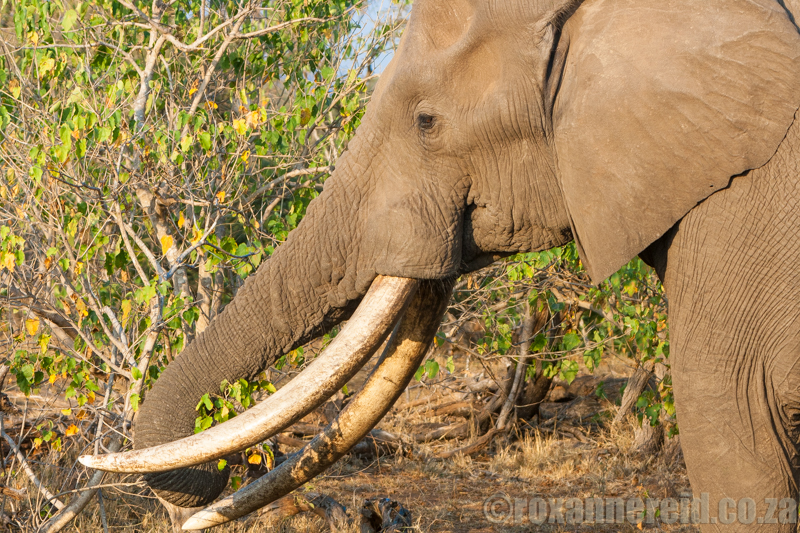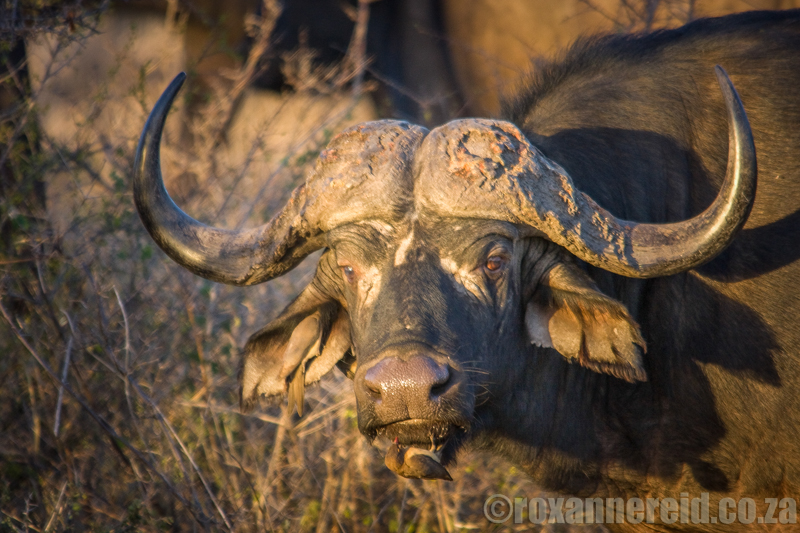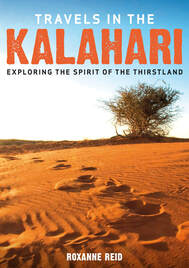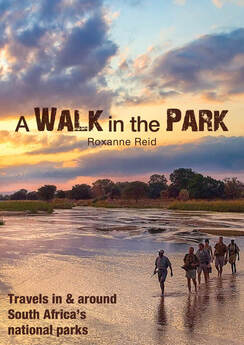Sonnyboy Htlatywayo is full of smiles. One minute he’s like a schoolboy with a high-pitched giggle, the next he emits a deep-throated chuckle. But we’re embarking on serious business tonight: a sunset drive from Satara camp in the Kruger National Park.
But Sonnyboy is cautious, not wanting us to hold him to account. ‘I can’t promise any animals, but one thing I can promise is a beautiful sunset,’ he grins.
‘Once it’s dark, you can start using the spotlights next to your seats,’ he continues. ‘But remember, by then we don’t stop anymore for impala. They’re very numerous. Unless it’s hanging in a tree, because we know they don’t climb trees ...’
Sonnyboy used to live outside the park near Skukuza and first came here as a child on a school trip. Later he decided he wanted to train to work in the park, so he did his NQF level 4 field-guiding course and has been working here for four years.
He starts off in fine fettle as we watch a lone elephant bull shove a marula tree over in a show of strength, then walk off without even tasting the bark or roots that he needs to boost his water intake in the dry season.
‘You know why he’s called the African elephant?’ asks Sonnyboy. ‘It’s because his ear is shaped like the map of Africa.’
Yeah, right, not because it occurs in Africa. We chuckle dutifully.
‘These old animals don’t move around a lot anymore and can become quite dangerous, especially to the rangers out on their rounds or looking for poachers,’ says Sonnyboy.
That poaching is a great problem at Kruger is borne out by his tale of eight rhinos killed near Roodewal bush camp just north of here in June. Rhino horn is still much in demand, particularly in the Far East as an aphrodisiac and for other alleged medicinal properties.
‘It’s just keratin, like your hair or nails,’ he says, as if he can’t believe what all the fuss is about.
The fleeting sight of a honey badger setting off on his evening foraging expedition takes our minds of the plight of the rhino, and soon we’re caught up in a festival of wildebeest, waterbuck and steenbok. Sonnyboy has a pithy story about each of them.
‘The wildebeest is easy for the lions to catch because he runs a short distance then comes back to check. So the lazy lions just wait for him,’ he laughs.
‘Waterbuck have a gland that emits a bad smell when they’re running so they’re not appealing to lions. The excretion also helps to “waterproof” the buck when it’s in the river. But if you find this animal sleeping and you shoot it, the meat is good to eat ... That steenbok, he mates for life and if his partner dies he will stay alone for the rest of his life.’
Life after dark
After the beautiful sunset we were promised, we spot a sidestriped jackal, easy to identify by the white tip on its tail.
‘They’re 70% scavengers and the rest they kill for themselves, mostly at night,’ he says.
And we can’t believe our luck when we find not one, not two, but eight white rhinos on the S41, bringing our list of Big Five sightings up to three. Sissies that they are, they all turn tail and trot away as soon as they get wind of us.
Sonnyboy is pretty clued up on trees, too, explaining that the leadwood (one of the Big Five trees) can live up to 100 years and its ash can be used as toothpaste or to cure headaches. And the magic guarri bush provides twigs for toothbrushes as well as a way to propose to your girlfriend.
‘Some branches have fruits and others don’t. Our grandfathers used to cut one of each and present them to a woman. If she chose the one without fruits, the proposal was turned down.’ He pauses briefly, then adds, ‘Nowadays it’s all about wireless and cell phone.’ Another deep-throated chuckle.
But our best sighting of the night is of a serval hunting birds and rats in the grass about ten metres from the road. Naff as it sounds, it’s a species I’ve never seen before in the wild, so I’m thrilled – and intrigued by its long neck and short tail, its lack of body balance.
Scrub hares are two-a-penny around here, bounding up and down as if their lives depended on it – which they probably do.
Shortly before we get back to Satara, one of them dances into the road and finds itself in the spotlight. It zigzags left and right, not leaving the road for nearly a kilometre but finally taking a left-turn as we go right, an overactive Duracell bunny that heralds our approach to camp.
Copyright © Roxanne Reid - No words or photographs on this site may be used without permission from roxannereid.co.za




